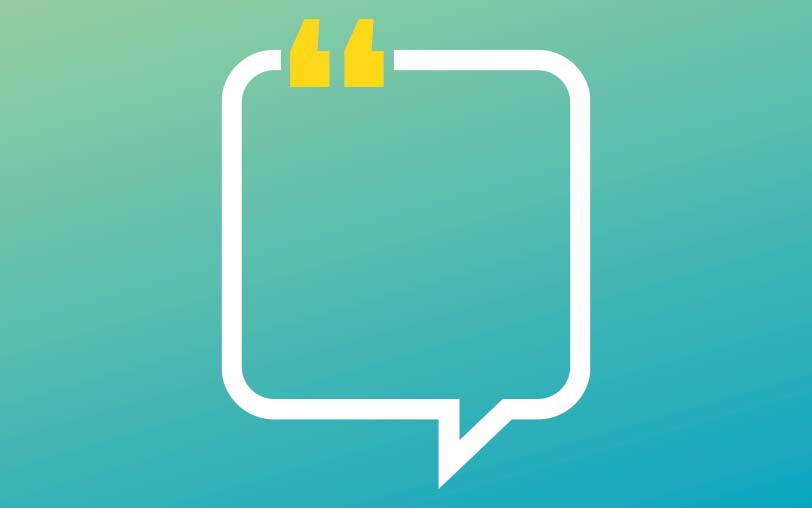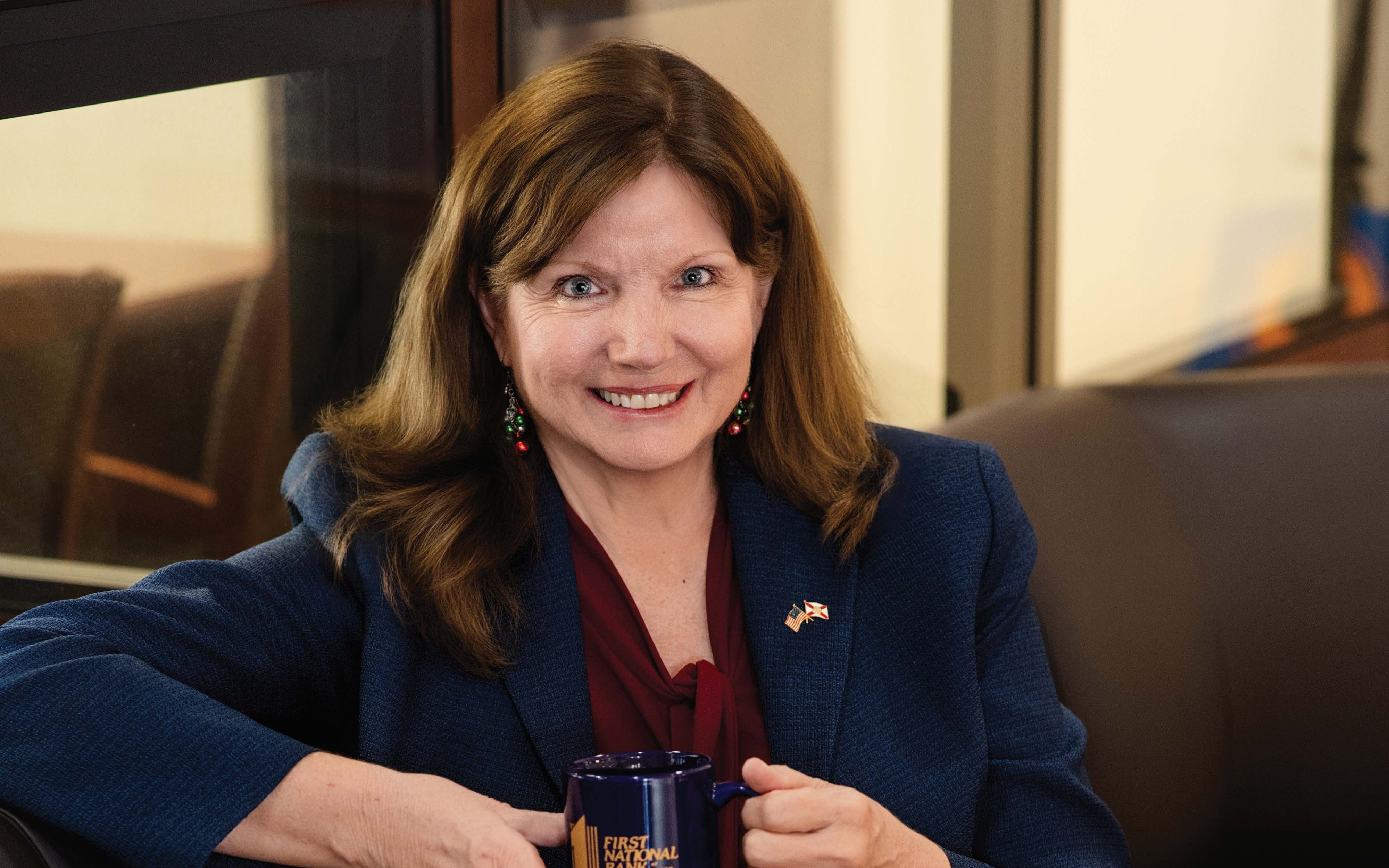Community banks are building relationships through an active, thoughtful presence on social media. Rather than a distraction, these platforms are an extension of the close customer relationships that community banks foster. Here, experts share their top strategies for a winning social media presence.
6 ways to boost your social media strategy
March 01, 2021 / By Julie Kendrick
Community banks are building relationships through an active, thoughtful presence on social media. Rather than a distraction, these platforms are an extension of the close customer relationships that community banks foster. Here, experts share their top strategies for a winning social media presence.
Community banking is a people-first business. One of the many ways to keep those connections strong is through social media. Enterprising community banks see the value in having a robust and active social media presence. They look beyond the platforms and features, and instead look to the benefits that can be gained through savvy social media strategies. They understand that social media is just another way to build relationships.
“If you’re doing this right, it’s not taking away from the relationships you have, but supporting them,” says Ben Pankonin, CEO and cofounder of Lincoln, Neb.–based Social Assurance. “Social media is not the hero of your story; the work your bank is doing is. Social media is the tool to support the work you are doing to leave your mark in your community.”
For skeptics who doubt how deep those online roots actually go, many experts say you might be surprised about what smart social media strategies can help you accomplish in forming stronger relationships all around.
“Social media activity can help you further your objectives to help the customers you have and also attract new ones,” says Anthony Englund, director of digital strategy at MSPC, the content marketing agency in Minneapolis that publishes Independent Banker. “It’s a great way to keep people engaged with your brand.”
Even if your organization already has a strong social media presence, there’s always something new to learn in this dynamic field. We spoke with several social media managers and experts at community banks about what’s working for them, where they keep their focus and what they hope to achieve for the future.
“My philosophy is to ‘share the good,’ being sure to tailor the message so you show how your bank is a true hero in your community.”—Emily Mays, Community Spirit Bank
1. Focus on your message
Even larger organizations can make the mistake of jumping into a social presence without taking time to consider it as part of a complete brand strategy. It all starts with understanding your community bank’s brand story. “Everything you do should be tied back to your purpose or mission,” says Emily Mays, vice president and chief administrative officer at $160 million-asset Community Spirit Bank in Red Bay, Ala.
“You can’t be everything to everybody, and you shouldn’t want to be,” says Natalie Bartholomew, chief administrative officer at $660 million-asset Grand Savings Bank in Bentonville, Ark. “You can have a large following, but a large portion could be bots. Your goal should be to build a community, not to gain followers just for followers’ sake.”
“My philosophy is to ‘share the good,’ being sure to tailor the message so you show how your bank is a true hero in your community,” Mays says. “But always be aware of what’s currently happening in your community and the world. Don’t post happy-go-lucky content when a plant is closing or there’s economic upheaval in the area.”
Tim Martinson, marketing manager at $736 million-asset North American Banking Company, headquartered in Roseville, Minn., agrees that during hard times, messages and branding must change. “Early last year,” he says, “our messaging was about starting and expanding businesses, and now it’s more focused on ‘How can we help?’”
2. Stay compliant—always
“Proceed with caution if you’re promoting anything that could come under regulatory scrutiny,” Mays says. “It’s always a good idea to ask for a second look.”
The Federal Financial Institutions Examination Council (FFIEC) is one resource for consumer compliance risk management guidance.
Your bank may also want to consult with a software company, such as Hearsay in San Francisco or Social Assurance, with platforms that monitor, supervise and allow you to comply with policies and industry regulations. Some banks do this themselves, and others hire agencies to do the monitoring for them.
“It’s all about risk management,” Pankonin says. “You need great processes in place to help you manage that risk, and a third-party can monitor, archive, read comments and flag them. You don’t want to create a scenario that’s difficult to audit.”
If your bank doesn’t have a social media policy in place, it’s time to make that happen. It should detail things like how comments will be addressed, how quickly and by whom.
“You’ll want to establish who is responsible for what and to set up your own agreed-upon best practices,” says Katelin Cwieka, assistant vice president and communications manager at $1.9 billion-asset Avidia Bank in Hudson, Mass. “It’s a good idea to provide examples of dos and don’ts, which is helpful when explaining your policy to employees.”
3. Engage your employees
Managing social media can be a daunting task, so it’s smart to enlist help from your staff. At Grand Savings Bank, for example, a group called the Grand Ambassadors takes photos and provides content about what’s happening at their branches.
“We always say that people bank with people, so we know our own employees, and their connections in the community can do so much to get others engaged,” Bartholomew says. “They’re asked to share, retweet, comment and like posts, which boosts our algorithm and helps us to be more successful.”
Avidia Bank has a formal advocacy and social selling program to help employees connect with customers.
“We’ve found that 89% of enrolled employees participate with our social messaging on a weekly basis,” Cwieka says. “If we see that adoption rate dipping, we might engage them with a contest and some prizes, but usually it’s just that they love participating. I share a monthly social media report that includes the top five most active employees on a leaderboard, and they love to be on it.”
“I’ve found that most social media managers [at other banks] love to talk about what they’re doing, and they’re happy to share.”—Tim Martinson, North American Banking Company
4. Learn from your peers
Make sure that your own off-hours scrolling includes people and other banks whose work you admire.
“Benchmark what other banks are doing, and when you like what you see, also follow their social media managers,” Martinson says. “If I see a post that’s intriguing, I’ll reach out and ask them to tell me about it, if they feel comfortable doing that. I’ve found that most social media managers love to talk about what they’re doing, and they’re happy to share.”
Expanding your horizons beyond the financial community can help you with additional inspiration. “Look at other people’s Instagrams and follow influencers who are in businesses besides banking,” Cwieka says. “Maybe you’ll see a really cool grid design or a custom filter that catches your eye.”
5. Post at the right time
A few years back, the internet was clogged with charts showing the perfect time of day to post content, platform by platform.
It turns out that they weren’t very helpful, since every business, time zone and market are unique. If you read somewhere that posting at 8:36 a.m. on a Thursday guarantees your tweet will be seen by everyone, you might want to reconsider your posting strategy.
If you’ve found a cadence that works for you, it’s fine to stick with it.
“We typically do all our posting in the morning,” Martinson says. “We’ve noticed we get bigger spikes then, since employees are engaging with the content and spreading it out across their networks more quickly. Every morning, I send an email to all employees, telling them what will be posted that day. It also serves as an extra compliance speed bump, since it gives our compliance director and senior leadership an extra hour to make any adjustments to content.”
It also pays to keep a close eye on your own data. “Pay attention to your analytics and notice what works for you,” Bartholomew says. “And be aware of where your audience is going. If you think they might be shifting to another platform, try to get ahead of it.”
6. Be creative with your posts
“One of the easiest ways to create strong posts is to speak about what you do for the community, because you’re probably already doing a lot,” Pankonin says. “Tie everything you do back to your purpose for existing as a bank.”
Posts that highlight employees always do well, bankers report. “When the person they’ve been working with in the loan department gets a promotion, people go crazy,” Mays says. “And don’t be afraid to take a chance on fun stuff. For example, National Doughnut Day is June 6, so we posted about it. People love to connect over something fun, and we were able to take advantage of a trending hashtag.”
Along similar lines, Bartholomew always posts on holidays like National Pet Day on April 11. “Those kinds of things always perform well,” she adds.
Other high-traffic posts are typically anything about a community event, or employee contests for activities like pumpkin carving or gingerbread house decorating. And sometimes getting high traffic is just a matter of looking around for visual content that’s happening right in front of you.
“I did a series of livestreams when we were demolishing an old building to clear space for a new branch we were building,” Cwieka says. “It was just me out there in a rainstorm, recording video on my phone, but it was a great way to get people excited about what was to come.”
Can you measure ROI with social media?
It’s not surprising those in the financial services industry are often looking for a nice return on investment to accompany their quarterly marketing report. When it comes to an often-upstream marketing effort like social media, that can be challenging to accomplish. Part of the job of a social media manager is to manage those expectations, says Tim Martinson, marketing manager at North American Banking Company in Roseville, Minn. They can even set up systems that connect social to results.
“ROI gets asked about every year, and it’s a challenge to measure,” he says. “Our focus is on brand awareness, which uses different metrics than ones which measure ROI. However, we’re working on processes where we can determine how seeing a particular post might have led to someone opening an account, for example, and we’re getting better at it.”
Natalie Bartholomew, chief administrative officer at Grand Savings Bank in Bentonville, Ark., says community bank leaders are better off ditching the idea of ROI when it comes with social media.
“I’m lucky that my team at Grand Savings Bank has empowered me to do my job, and they trust the resources, knowledge and skill sets I have. It takes time and consistency to see results,” she says. “The biggest thing for us is that we used to be unknown and now people know us, because they’ve seen us on social. There’s a definite buzz about our bank, and you can’t put a price on that.”
The inside scoop on social networks
Audience: This platform still delivers enough user numbers to maintain its popularity, which is why so many community banks post on it at least once a day. Its users skew older, but even younger people might check in daily to use the messaging or event features.
Content: This is the place to share content for a broad spectrum of potential customers. It can be the place to promote new products, and it’s also a good spot for longer—three minutes or more—videos.
What’s new: First rolled out in 2017 but only just gaining traction with users, Facebook Stories is intended for brief visual content. Like Snapchat of Instagram Stories, they’re only viewable for 24 hours, unless you take the extra step to post them in your feed.
Top tip: While livestreaming is built into many platforms, Facebook Live is one of the most popular. One reason why is its increased engagement; it sees six times more interactions than a normal video and people watch them three times as long on average.


Audience: You’ll find a younger audience here, and, if you choose to develop a strong Instagram presence, you’ll see less competition from other banks, many of whom haven’t wholeheartedly embraced the platform. Avidia Bank was an early adopter. “It’s by far our most active channel,” says Katelin Cwieka, assistant vice president and communications manager at the Hudson, Mass.-based community bank. “It’s been untapped by other financial institutions, so we see it as a great opportunity.”
Content: Highly visual and well-designed content belongs on Instagram. “We have a fun grid set up, and every other post is part of that grid,” says Natalie Bartholomew, chief administrative officer at Grand Savings Bank in Bentonville, Ark. “We make sure our posts are aesthetically pleasing, pretty and different.”
What’s new: Instagram Reels allows users to create 15-second clips set to music, similar to the TikTok format.
Top tip: Use your Instagram grid posts to cultivate a brand experience while relying on Stories to push out daily happenings at the community bank, fluctuations in branch hours and more. Have fun with it.

Audience: This is the place to reach businesses and professionals.
Content: “We find it’s a good place for professionals to connect and share ideas,” Bartholomew says. “It’s also an excellent location for talent recruitment.”
What’s new: Everyone’s getting in on the Stories concept, even this more staid platform. LinkedIn’s version allows you to share images and short videos of “everyday professional moments,” which are viewable for 24 hours.
Top tip: Try cultivating a LinkedIn audience through bank-specific thought leadership, such as educational articles produced by your in-house experts or industry partners.

Audience: Twitter attracts media contacts, industry experts and highly engaged members of topic-driven communities.
Content: The app was designed for fast-breaking news and for responding to unfolding events in your community. Also, it’s a good place to connect with members of the media who mention specific topics to which you could contribute an expert opinion.
What’s new: Fleets are Twitter’s new story feature, which allow users to create temporary—or fleeting—posts with less permanence than
a tweet.
Top tip: Twitter features trending topics that change moment to moment as masses of users talk about the same things. Topics are also localized in subgroups like states or metros. Try joining in on the conversation started by influencers in your area. Chances are, it’ll be seen by local users.
Worth noting
Pinterest has been seeing more activity from larger financial institutions, which use it to post money management tips and ideas on topics like how to set up an emergency fund, how to plan ahead for tax season and how to create a monthly budget. If your bank already has a blog, some of that content could find a home here, too.
TikTok is a youth-driven powerhouse for short-form mobile videos, which range from a few seconds to a full minute. It’s a popular platform with an incredibly loyal following, but none of the community banks we talked with were using it, preferring to take a wait-and-see approach to the app.
Want more info?
ICBA’s “Tell Your Story” toolkit has everything you need to build an effective marketing strategy, including a Social Media 101 resource. And it’s free to members.
Subscribe now
Sign up for the Independent Banker newsletter to receive twice-monthly emails about new issues and must-read content you might have missed.
Sponsored Content
Featured Webinars
Join ICBA Community
Interested in discussing this and other topics? Network with and learn from your peers with the app designed for community bankers.
Subscribe Today
Sign up for Independent Banker eNews to receive twice-monthly emails that alert you when a new issue drops and highlight must-read content you might have missed.
News Watch Today

Join the Conversation with ICBA Community
ICBA Community is an online platform led by community bankers to foster connections, collaborations, and discussions on industry news, best practices, and regulations, while promoting networking, mentorship, and member feedback to guide future initiatives.













